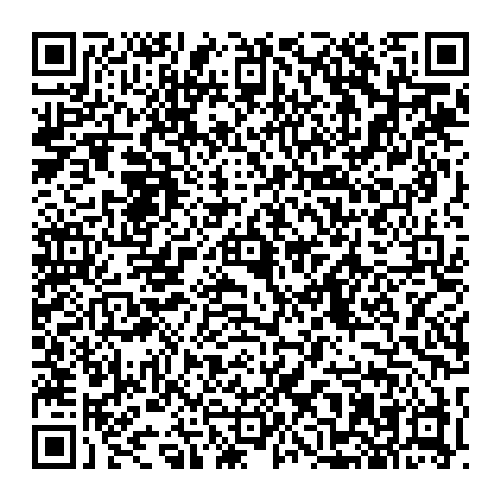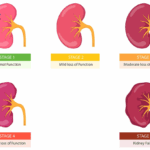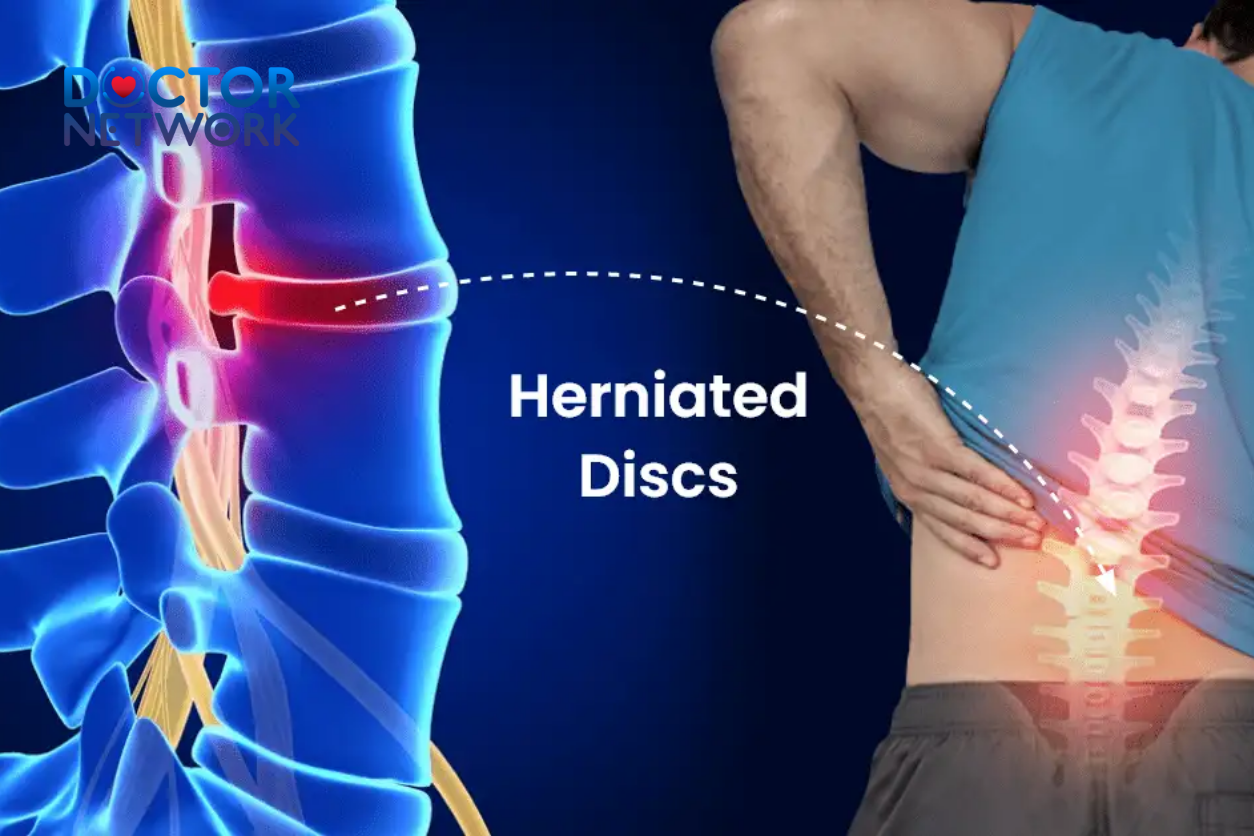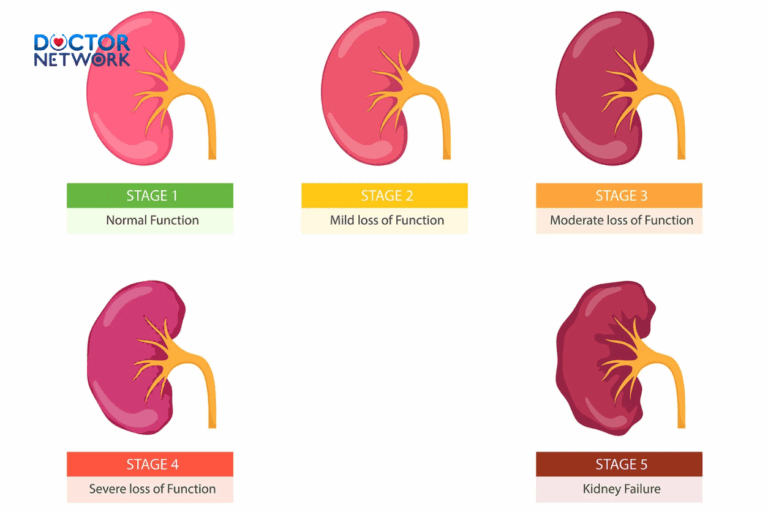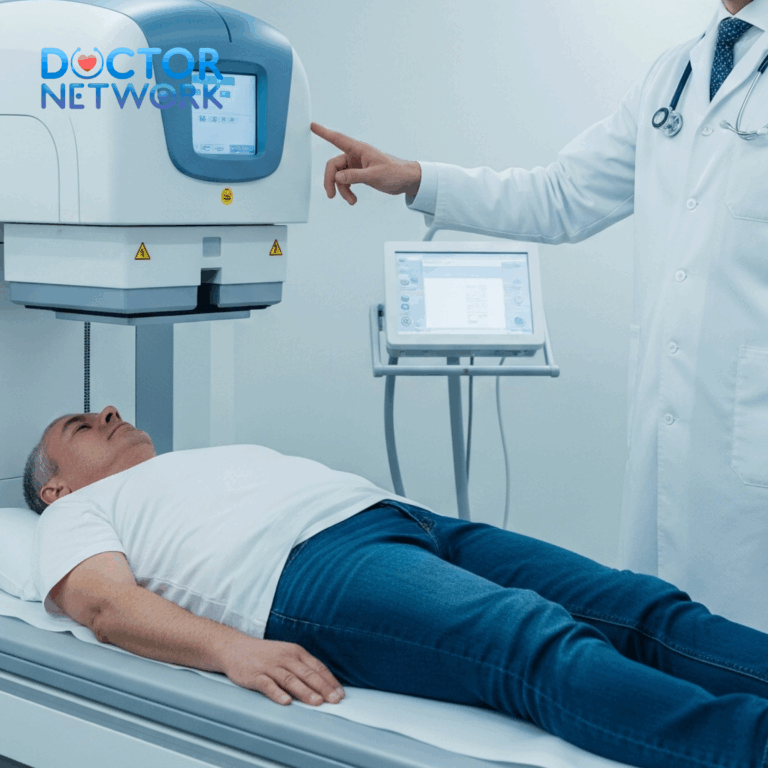Chiropractic care provides significant relief for sciatica patients through targeted spinal adjustments that address nerve compression at its source. This evidence-based treatment approach offers a non-invasive alternative to surgery and prescription medications, with clinical studies demonstrating effectiveness rates of up to 86% for certain sciatica cases. Modern chiropractic intervention combines manual spinal manipulation with advanced therapeutic modalities to restore proper nerve function and alleviate radiating pain patterns.
Can a Chiropractor Help With Sciatica? – This comprehensive guide examines the relationship between chiropractic treatment and sciatica management, exploring diagnostic considerations, treatment protocols, safety profiles, and integration with conventional medical approaches. We’ll analyze when chiropractic intervention proves most beneficial, potential contraindications, and evidence-based outcomes to help patients make informed healthcare decisions about their sciatic nerve pain management.
Understanding Sciatica: Clinical Definition and Symptom Patterns
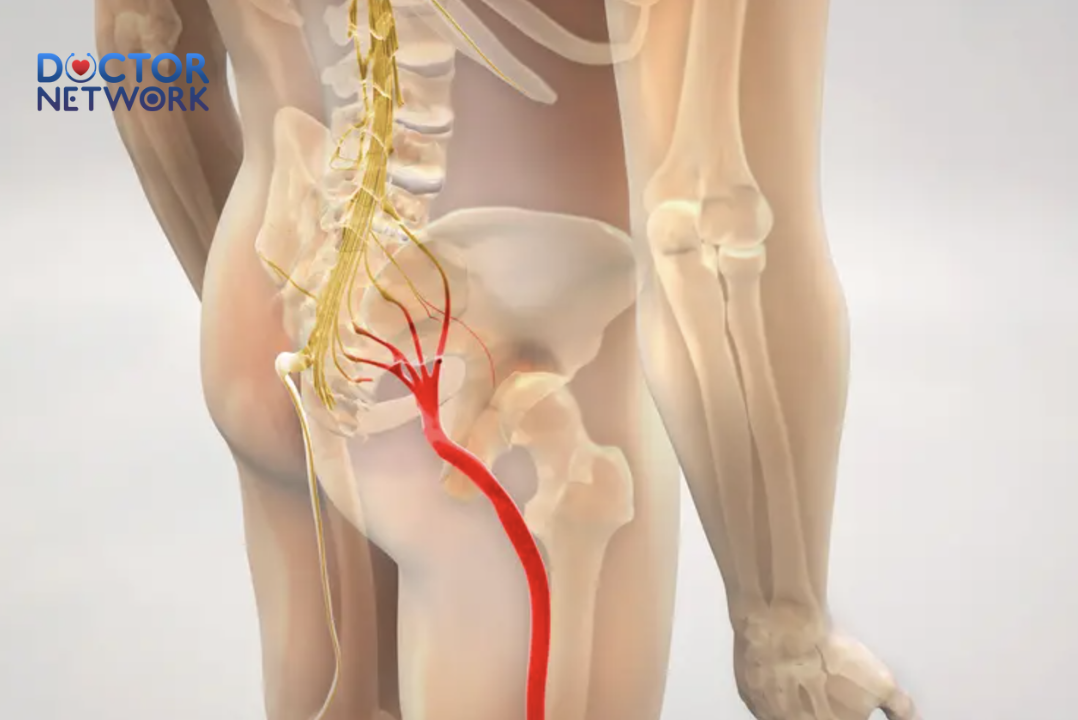 Sciatica represents a neurological condition characterized by irritation or compression of the sciatic nerve, the body’s longest peripheral nerve extending from the lumbar spine through the buttocks and down each leg to the foot. Medical professionals recognize sciatica as a symptom complex rather than a standalone diagnosis, with pain radiating along the anatomical distribution of the affected nerve root.
Sciatica represents a neurological condition characterized by irritation or compression of the sciatic nerve, the body’s longest peripheral nerve extending from the lumbar spine through the buttocks and down each leg to the foot. Medical professionals recognize sciatica as a symptom complex rather than a standalone diagnosis, with pain radiating along the anatomical distribution of the affected nerve root.
The hallmark symptom involves sharp, shooting pain originating in the lower back and traveling down the posterior or lateral aspect of the thigh, often extending below the knee. Patients frequently describe the sensation as electric shock-like, burning, or stabbing pain that intensifies with specific movements such as coughing, sneezing, or prolonged sitting positions.
Neurological manifestations extend beyond pain to include:
- Paresthesias (tingling or pins-and-needles sensations)
- Numbness in affected dermatomes
- Motor weakness in specific muscle groups
- Diminished deep tendon reflexes
- Altered sensation to light touch or pinprick
The sciatic nerve comprises nerve roots L4, L5, S1, S2, and S3, which converge to form the thick nerve bundle. Compression at different spinal levels produces distinct symptom patterns, allowing healthcare providers to localize the anatomical source of irritation through careful neurological examination.
Primary Etiological Factors in Sciatica Development
Lumbar disc herniation accounts for approximately 90% of sciatica cases, occurring when the nucleus pulposus protrudes through a weakened annulus fibrosus and compresses adjacent nerve roots. This mechanical compression triggers inflammatory cascades that perpetuate pain signals and maintain symptom persistence.
Spinal stenosis represents another significant causative factor, particularly in older populations where degenerative changes narrow the spinal canal or neural foramina. Age-related osteoarthritis, ligamentum flavum hypertrophy, and facet joint arthropathy contribute to progressive canal narrowing and subsequent nerve root entrapment.
| Primary Causes | Prevalence | Age Group | Treatment Response |
|---|---|---|---|
| Disc Herniation | 85-90% | 30-50 years | Excellent |
| Spinal Stenosis | 10-15% | >60 years | Good to Moderate |
| Piriformis Syndrome | 5-10% | Athletes | Excellent |
| Spondylolisthesis | 3-5% | Variable | Moderate |
Less common etiologies include:
- Piriformis syndrome (deep buttock muscle spasm)
- Spondylolisthesis (vertebral slippage)
- Spinal tumors or infections
- Pregnancy-related biomechanical changes
- Traumatic injuries affecting lumbosacral structures
Risk Factors and Demographic Considerations
Sciatica affects individuals across various age groups, with peak incidence occurring between ages 30-50 years. Gender distribution shows slight male predominance in younger populations, while older women demonstrate higher rates due to osteoporotic changes and hormonal influences on connective tissue integrity.
Occupational risk factors play crucial roles in sciatica development. Prolonged sitting occupations, heavy manual labor, and repetitive bending or twisting motions increase vulnerability to disc degeneration and nerve compression. Sedentary lifestyles contribute to core muscle weakness and postural imbalances that predispose individuals to spinal dysfunction.
Modifiable risk factors include:
- Obesity – Increased mechanical loading on lumbar structures
- Poor physical conditioning – Weakened spinal stabilizing muscles
- Smoking – Reduced disc nutrition and delayed healing
- Diabetes mellitus – Peripheral neuropathy and impaired tissue repair
- Improper lifting techniques – Acute disc injury risk
Clinical Impact and Quality of Life Implications

Sciatica significantly impairs functional capacity and quality of life metrics across multiple domains. Patients experience limitations in activities of daily living, occupational performance, and recreational pursuits. Sleep disturbances commonly occur due to positional pain exacerbation, creating cycles of fatigue and increased pain sensitivity.
The condition’s impact extends beyond physical symptoms to encompass psychological and social dimensions. Chronic pain states associated with prolonged sciatica can trigger depression, anxiety, and fear-avoidance behaviors that perpetuate disability patterns. Work productivity suffers, with many patients requiring extended leave or job modifications.
Early intervention proves critical in preventing chronic pain syndrome development and minimizing long-term disability. Research demonstrates that patients receiving appropriate treatment within the first six weeks of symptom onset achieve superior outcomes compared to those with delayed intervention.
Comprehensive Treatment Approaches for Sciatica Management
Self-Care and Conservative Management Strategies
Conservative management forms the foundation of sciatica treatment, with most patients experiencing significant improvement through non-invasive interventions. Activity modification emphasizes maintaining mobility while avoiding aggravating positions or movements that exacerbate nerve irritation.
Thermal therapy provides immediate symptomatic relief through distinct mechanisms. Cold application (cryotherapy) reduces inflammation and numbs acute pain, while heat therapy promotes muscle relaxation and increases local blood flow. Alternating hot and cold treatments often proves most effective for chronic presentations.
Optimal sleep positioning strategies include:
- Supine positioning with pillow support under knees
- Side-lying on unaffected side with pillow between knees
- Avoiding prone positioning that hyperextends the lumbar spine
- Using firm mattress support to maintain spinal alignment
Gentle exercise programs focus on spinal mobility, core strengthening, and nerve mobilization techniques. Physical activity prevents muscle deconditioning while promoting healing through improved circulation and endorphin release. However, exercise prescription requires professional guidance to ensure appropriate progression and avoid symptom exacerbation.
Pharmacological Intervention Protocols
Medication management follows a stepwise approach beginning with over-the-counter analgesics and anti-inflammatory agents. Nonsteroidal anti-inflammatory drugs (NSAIDs) such as ibuprofen, naproxen, or diclofenac address both pain and inflammation components of sciatica.
For severe or refractory cases, healthcare providers may prescribe:
- Oral corticosteroids (prednisone) for acute inflammatory episodes
- Anticonvulsants (gabapentin, pregabalin) for neuropathic pain components
- Tricyclic antidepressants (amitriptyline) for chronic pain modulation
- Muscle relaxants (cyclobenzaprine) for associated muscle spasm
- Opioid analgesics (tramadol, oxycodone) for severe, short-term pain control
Medication selection considers individual patient factors including comorbidities, potential drug interactions, and side effect profiles. Gastrointestinal protection may be necessary with prolonged NSAID use, particularly in elderly patients or those with peptic ulcer disease history.
Physical Therapy and Manual Treatment Techniques
Physical therapy addresses multiple aspects of sciatica pathophysiology through targeted interventions designed to restore normal movement patterns and reduce nerve irritation. Therapeutic goals include pain reduction, improved flexibility, strength enhancement, and functional restoration.
Treatment modalities commonly employed include:
- Manual therapy techniques (joint mobilization, soft tissue manipulation)
- Therapeutic exercises (stretching, strengthening, stabilization)
- Electrotherapy (TENS, ultrasound, electrical stimulation)
- Traction therapy for disc decompression
- Patient education regarding body mechanics and ergonomics
Specialized manual techniques such as neural mobilization specifically target sciatic nerve mobility and reduce adhesion formation. These gentle movement patterns promote nerve gliding and decrease mechanical sensitivity while improving local circulation.
Chiropractic Care: Principles and Mechanisms of Action
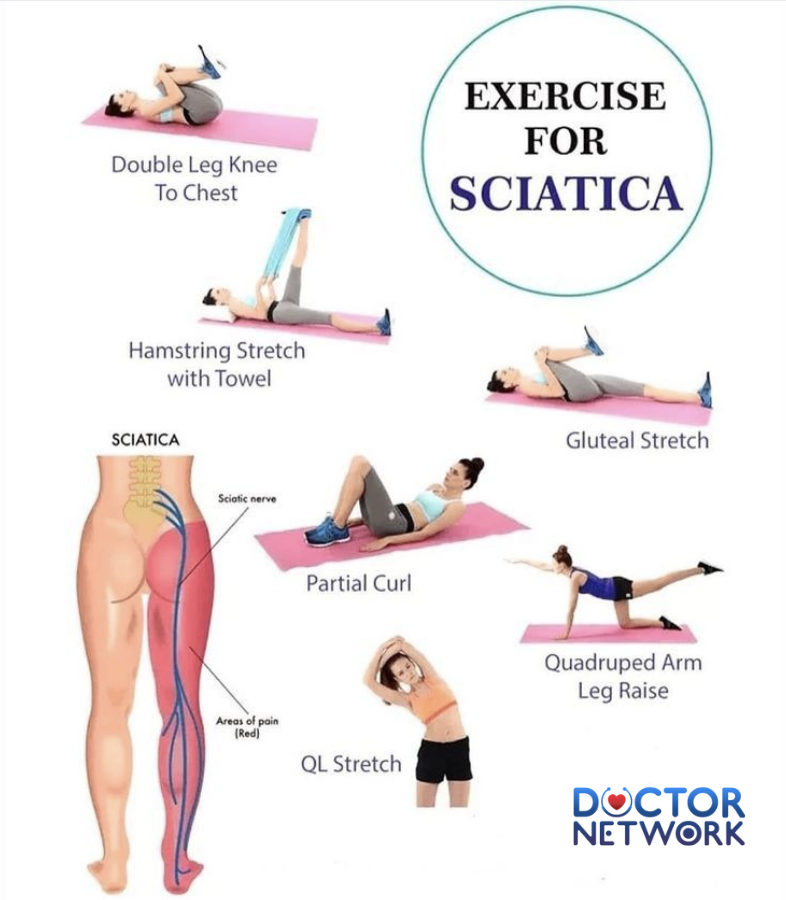
Chiropractic treatment addresses sciatica through spinal manipulation and related therapeutic interventions aimed at restoring normal joint function and reducing nerve interference. The profession’s foundational principle holds that spinal misalignments (subluxations) can impair nervous system function and contribute to various health conditions.
Chiropractors perform specific manual adjustments designed to correct vertebral malposition and restore normal biomechanical function. These high-velocity, low-amplitude thrusts target specific spinal segments to improve joint mobility, reduce muscle tension, and alleviate nerve compression.
Core chiropractic principles include:
- Structural-functional relationships – Spinal alignment affects nervous system function
- Body’s innate healing capacity – Removing nerve interference allows natural recovery
- Holistic treatment approach – Address underlying causes rather than symptoms alone
- Drug-free intervention – Avoid pharmaceutical side effects and dependencies
The profession has evolved significantly since its inception in 1895, incorporating evidence-based practices and modern diagnostic technologies while maintaining its distinctive manual treatment approach.
Conditions Treated Through Chiropractic Intervention
Chiropractic scope of practice extends beyond sciatica to encompass various musculoskeletal conditions affecting spinal and extremity joints. Common conditions successfully treated include:
| Spinal Conditions | Extremity Conditions | Other Applications |
|---|---|---|
| Disc herniation | Shoulder impingement | Headache syndromes |
| Spinal stenosis | Tennis elbow | TMJ dysfunction |
| Facet joint syndrome | Carpal tunnel syndrome | Postural disorders |
| Scoliosis | Knee osteoarthritis | Sports injuries |
Modern chiropractic clinics often integrate multiple therapeutic modalities to enhance treatment outcomes. These may include soft tissue therapies, therapeutic exercise prescription, nutritional counseling, and lifestyle modification recommendations.
Evidence Base and Safety Profile
Extensive research supports chiropractic effectiveness for various spinal conditions, with numerous systematic reviews and clinical trials demonstrating positive outcomes for lower back pain and related disorders. The treatment approach shows particular promise for acute and subacute presentations.
Safety data indicates that serious adverse events from chiropractic manipulation occur rarely, with estimates ranging from 1 in 100,000 to 1 in 2 million treatments. Most reported side effects involve temporary soreness or stiffness following treatment, resolving within 24-48 hours.
Contraindications to chiropractic manipulation include:
- Cauda equina syndrome
- Progressive neurological deficits
- Spinal fractures or instability
- Severe osteoporosis
- Anticoagulant therapy
- Acute inflammatory conditions
Chiropractic Treatment Protocols for Sciatica
Initial Assessment and Diagnostic Procedures
Comprehensive chiropractic evaluation begins with detailed history-taking to identify symptom patterns, aggravating factors, and previous treatment responses. Physical examination includes orthopedic and neurological testing to localize the source of nerve irritation and rule out serious pathology.
Standard examination components include:
- Posture and gait analysis
- Range of motion assessment
- Orthopedic provocative tests (straight leg raise, Lasègue’s sign)
- Neurological examination (reflexes, sensation, motor strength)
- Palpatory examination of spinal structures
Advanced imaging may be recommended when conservative treatment fails or red flag symptoms suggest serious underlying pathology. MRI remains the gold standard for visualizing soft tissue structures and nerve root compression, while X-rays evaluate bony alignment and rule out fractures.
Treatment Techniques and Modalities
Chiropractic treatment for sciatica typically involves multiple therapeutic approaches tailored to individual patient presentations. Spinal manipulation techniques vary based on the specific location and nature of the problem, with different methods employed for disc herniations versus spinal stenosis.
Common manipulation techniques include:
- Diversified technique – Traditional manual adjustments using direct thrust
- Flexion-distraction – Gentle stretching movements for disc conditions
- Activator method – Instrument-assisted adjustments for precise targeting
- Cox technique – Specialized table-assisted spinal decompression
Adjunctive therapies enhance treatment effectiveness and patient comfort. Soft tissue therapies address muscle tension and trigger points that contribute to pain patterns. Therapeutic exercises strengthen supporting muscles and improve flexibility to prevent recurrence.
Modern chiropractic clinics incorporate advanced technologies such as:
- Spinal decompression tables – Computerized traction for disc conditions
- Class IV laser therapy – Deep tissue healing and pain reduction
- Shockwave therapy – Acoustic waves to promote tissue repair
- Electrical stimulation – Muscle relaxation and pain control
Treatment Frequency and Duration
Treatment protocols vary based on symptom severity, underlying pathology, and individual patient response. Acute presentations typically require more frequent initial visits (3-4 times per week) with gradual reduction as symptoms improve.
Typical treatment timeline:
- Phase 1 (Weeks 1-2): Pain reduction and inflammation control
- Phase 2 (Weeks 3-6): Functional improvement and mobility restoration
- Phase 3 (Weeks 7-12): Strengthening and prevention focus
- Maintenance phase: Periodic visits to prevent recurrence
Most patients experience initial improvement within 2-4 weeks of treatment initiation. Complete resolution may require 6-12 weeks depending on the severity and chronicity of the condition.
Integration with Conventional Medical Care
Successful sciatica management often requires coordinated care between multiple healthcare providers. Chiropractors increasingly work collaboratively with medical physicians, physical therapists, and other specialists to optimize patient outcomes.
Collaborative care models include:
- Shared decision-making regarding treatment approaches
- Communication protocols for monitoring patient progress
- Referral pathways for cases requiring medical intervention
- Integrated treatment plans combining multiple therapeutic modalities
This interdisciplinary approach proves particularly valuable for complex cases involving multiple contributing factors or when conservative treatment fails to achieve expected outcomes.
When Medical Referral Becomes Necessary
Certain clinical presentations require immediate medical evaluation and may not be appropriate for chiropractic intervention. Red flag symptoms indicating serious pathology include:
- Progressive motor weakness or paralysis
- Bowel or bladder dysfunction
- Saddle anesthesia (numbness around perineum)
- Bilateral leg symptoms with severe pain
- Fever accompanying back pain
- History of cancer with new back pain
These presentations may indicate cauda equina syndrome, spinal infection, or malignancy requiring urgent medical attention and possible surgical intervention.
Treatment Outcomes and Prognosis
Effectiveness Measures and Success Rates
Clinical outcomes for chiropractic treatment of sciatica demonstrate favorable results across multiple measures including pain intensity, functional capacity, and patient satisfaction. Research indicates that 60-80% of patients experience significant improvement within 6-8 weeks of initiating chiropractic care.
Key outcome measures include:
- Visual Analog Scale (VAS) pain scores
- Oswestry Disability Index functional assessments
- Return to work/activity timeframes
- Patient satisfaction ratings
- Medication usage reduction
Long-term follow-up studies suggest that benefits persist beyond the active treatment period, with many patients maintaining improvement at 6-month and 1-year intervals.
Factors Influencing Treatment Success
Several variables affect chiropractic treatment outcomes for sciatica patients. Early intervention typically yields better results than delayed treatment, as acute presentations respond more favorably than chronic conditions.
Positive prognostic indicators:
- Symptom duration less than 6 weeks
- Age under 40 years
- Good general health status
- Absence of psychological distress
- High motivation for recovery
- Compliance with treatment recommendations
Negative prognostic factors:
- Chronic symptom duration (>3 months)
- Severe initial pain levels
- Multiple previous episodes
- Psychological comorbidities (depression, anxiety)
- Litigation or compensation issues
- Poor social support systems
Cost-Effectiveness and Healthcare Economics
Chiropractic care demonstrates favorable cost-effectiveness profiles compared to conventional medical treatments for sciatica and related spinal conditions. Studies analyzing direct medical costs show lower overall expenditures for patients receiving chiropractic treatment versus those managed through traditional medical approaches.
Economic advantages include:
- Lower per-visit costs compared to specialist consultations
- Reduced diagnostic imaging requirements
- Decreased medication expenses and associated side effects
- Earlier return to work and productivity
- Lower surgical intervention rates
Healthcare utilization patterns show that patients receiving early chiropractic intervention demonstrate reduced subsequent medical care consumption, including fewer emergency department visits and specialist referrals.
Patient Selection Criteria and Appropriate Candidates
Ideal Candidates for Chiropractic Treatment
Chiropractic intervention proves most beneficial for specific patient populations and clinical presentations. Mechanical causes of sciatica, particularly those involving joint dysfunction or muscle imbalances, respond favorably to manual treatment approaches.
Optimal candidate characteristics:
- Mechanical pain patterns related to movement
- Recent symptom onset (less than 12 weeks)
- Absence of progressive neurological deficits
- Motivation for active participation in treatment
- Preference for non-pharmacological approaches
- Good general health without significant comorbidities
Young to middle-aged adults with occupation-related or activity-related sciatica often achieve excellent outcomes through chiropractic intervention combined with ergonomic modifications and exercise programs.
Contraindications and Precautions
Certain conditions preclude chiropractic manipulation or require modified treatment approaches. Absolute contraindications involve medical emergencies or conditions where spinal manipulation could cause harm.
Absolute contraindications:
- Cauda equina syndrome
- Progressive myelopathy
- Spinal fractures or instability
- Acute inflammatory arthritis
- Anticoagulant therapy
- Severe osteoporosis with fracture risk
Relative contraindications requiring caution:
- Pregnancy (modified techniques)
- Herniated disc with severe neurological compromise
- Post-surgical spinal conditions
- Significant psychological distress
- Poor treatment compliance history
Integration with Complementary Therapies
Multimodal Treatment Approaches
Contemporary sciatica management increasingly emphasizes multimodal treatment strategies that combine chiropractic care with other evidence-based interventions. This integrated approach addresses multiple aspects of the condition while minimizing individual treatment limitations.
Effective combination therapies include:
- Chiropractic + Physical Therapy
- Complementary skill sets and treatment approaches
- Enhanced functional restoration outcomes
- Improved long-term maintenance strategies
- Chiropractic + Massage Therapy
- Soft tissue preparation for manipulation
- Enhanced muscle relaxation and circulation
- Improved patient comfort and treatment tolerance
- Chiropractic + Acupuncture
- Synergistic pain reduction mechanisms
- Reduced inflammation and muscle tension
- Enhanced nerve function and healing
- Chiropractic + Exercise Therapy
- Strengthening and stabilization focus
- Improved biomechanics and posture
- Prevention of symptom recurrence
Lifestyle Modification and Self-Management
Successful long-term sciatica management requires patient education and active participation in self-care strategies. Chiropractors emphasize lifestyle modifications that support spinal health and prevent symptom recurrence.
Key lifestyle recommendations:
- Ergonomic workplace modifications
- Proper lifting and body mechanics training
- Regular exercise and fitness maintenance
- Weight management for obese patients
- Stress reduction and relaxation techniques
- Sleep hygiene and proper bedding selection
Advanced Chiropractic Techniques and Technologies
Modern Equipment and Treatment Modalities
Contemporary chiropractic practice incorporates sophisticated technologies that enhance diagnostic accuracy and treatment effectiveness. Advanced equipment allows for more precise interventions and improved patient outcomes.
Cutting-edge technologies include:
| Technology | Application | Benefits |
|---|---|---|
| Spinal Decompression | Disc herniation treatment | Non-surgical alternative |
| Laser Therapy | Deep tissue healing | Accelerated recovery |
| Shockwave Therapy | Chronic pain conditions | Tissue regeneration |
| Computerized Adjusting | Precise spinal manipulation | Improved accuracy |
These technological advances expand treatment options for patients who may not respond to traditional manual techniques or require modified approaches due to age, condition severity, or personal preferences.
Specialized Techniques for Specific Presentations
Different sciatica presentations may benefit from specialized chiropractic techniques tailored to the underlying pathophysiology. Disc herniations require different approaches than spinal stenosis or piriformis syndrome.
Technique-specific applications:
- Flexion-distraction for posterior disc herniations
- Cox technique for spinal stenosis presentations
- Activator method for elderly or osteoporotic patients
- Applied kinesiology for muscle imbalance patterns
- Graston technique for soft tissue adhesions
Patient Education and Self-Management Strategies
Understanding the Condition
Patient education forms a crucial component of successful chiropractic treatment for sciatica. Understanding the condition’s nature, expected recovery timeline, and self-management strategies empowers patients to participate actively in their recovery process.
Educational topics include:
- Anatomical basis of sciatica symptoms
- Natural healing processes and recovery expectations
- Activity modification guidelines
- Warning signs requiring immediate attention
- Prevention strategies for symptom recurrence
Home Exercise Programs
Specific exercise programs complement in-office chiropractic treatment and promote long-term spinal health. These programs typically progress through phases corresponding to healing stages and functional improvement.
Exercise program components:
- Phase 1: Pain reduction
- Gentle range of motion exercises
- Basic stretching for tight muscles
- Breathing and relaxation techniques
- Phase 2: Mobility restoration
- Progressive stretching programs
- Joint mobilization exercises
- Core stability introduction
- Phase 3: Strengthening and conditioning
- Progressive resistance training
- Functional movement patterns
- Sport or activity-specific exercises
Prevention Strategies and Long-Term Maintenance
Primary Prevention Approaches
Preventing initial sciatica episodes requires addressing modifiable risk factors and promoting spinal health through lifestyle modifications. Primary prevention strategies prove more cost-effective than treatment of established conditions.
Key prevention strategies:
- Regular physical activity and fitness maintenance
- Proper body mechanics and lifting techniques
- Ergonomic workplace and home environments
- Maintaining healthy body weight
- Avoiding prolonged static postures
- Stress management and adequate sleep
Secondary Prevention and Recurrence Reduction
For individuals with previous sciatica episodes, secondary prevention focuses on preventing symptom recurrence and maintaining functional improvements achieved through treatment.
Maintenance strategies include:
- Periodic chiropractic check-ups and adjustments
- Continued exercise and flexibility programs
- Ongoing ergonomic awareness and modifications
- Early intervention for minor symptom flare-ups
- Lifestyle modifications addressing individual risk factors
Conclusion and Clinical Recommendations
Chiropractic care offers a valuable, evidence-based treatment option for individuals suffering from sciatica, particularly those with mechanical causes and recent symptom onset. The profession’s emphasis on manual treatment, patient education, and natural healing aligns well with current healthcare trends favoring conservative, non-invasive interventions.
Research supports chiropractic effectiveness for sciatica management, with success rates comparable to or exceeding conventional medical approaches while demonstrating favorable safety profiles and cost-effectiveness. Integration with other healthcare disciplines enhances outcomes and ensures comprehensive patient care.
Clinical recommendations for optimal outcomes:
- Early intervention within 6 weeks of symptom onset
- Comprehensive evaluation to rule out serious pathology
- Individualized treatment plans based on specific presentations
- Multimodal approaches combining various therapeutic modalities
- Patient education emphasizing self-management and prevention
- Collaborative care with other healthcare providers when indicated
Patients considering chiropractic treatment for sciatica should seek qualified practitioners with appropriate training and experience in spinal conditions. Open communication between patients, chiropractors, and other healthcare providers ensures coordinated care and optimal treatment outcomes.
The future of chiropractic care for sciatica appears promising, with ongoing research continuing to refine treatment protocols and identify patient populations most likely to benefit from manual intervention. As healthcare systems increasingly emphasize value-based care and patient-centered approaches, chiropractic treatment stands positioned to play an important role in comprehensive sciatica management strategies.
5 most frequently asked questions about can a chiropractor help with sciatica, along with evidence-based answers:
1. Can chiropractic care effectively relieve sciatica pain?
Yes, chiropractic care can provide significant relief for sciatica pain. Spinal adjustments help reduce pressure on the sciatic nerve by correcting spinal misalignments and improving joint mobility. Studies have shown that chiropractic manipulation offers notable short-term pain relief and improved function for both acute and chronic sciatica cases.
2. How does chiropractic treatment work for sciatica?
Chiropractors use spinal adjustments to restore proper motion to restricted vertebrae, which reduces nerve compression and inflammation. They may also apply soft tissue therapies like myofascial release to loosen tight muscles (e.g., piriformis) that irritate the sciatic nerve. Additionally, chiropractors guide patients through exercises and stretches to strengthen core muscles and maintain spinal health.
3. How long does chiropractic treatment for sciatica usually take?
The duration varies depending on the severity and chronicity of the condition. Some patients experience relief after a few sessions, while others may require consistent care over several weeks or months. Adherence to the chiropractor’s treatment plan and lifestyle recommendations is important for optimal results and preventing recurrence.
4. Is chiropractic care a safe alternative to surgery for sciatica?
Yes. Research comparing chiropractic care to surgery (such as microdiscectomy) found no significant difference in outcomes after one year. Chiropractic treatment offers a non-invasive, drug-free option without the risks and recovery time associated with surgery. Many patients benefit from chiropractic care and avoid surgical intervention altogether.
5. Can chiropractic care prevent future episodes of sciatica?
Regular chiropractic adjustments can help maintain proper spinal alignment and reduce the risk of nerve impingement that causes sciatica. Chiropractors also provide advice on posture, exercises, and lifestyle changes that support long-term spinal health and minimize the chance of recurrence.
REFERENCES
1. Systematic Reviews and Meta-Analyses (Highest Level of Evidence)
These studies gather and analyze data from multiple high-quality individual studies to form a broader conclusion.
Study 1: A Systematic Review of Spinal Manipulative Therapy for Sciatica
Title: Spinal Manipulative Therapy for Acute Low Back Pain and Sciatica: A Systematic Review and Meta-Analysis
Authors: Sidney M. Rubinstein, Marienke van Middelkoop, et al.
Source: The Spine Journal, 2019 (This is an updated, high-profile review). An older, highly cited one is by Leininger et al., 2011).
Key Findings: This meta-analysis looked at 21 randomized controlled trials with over 2,500 participants. The authors found that spinal manipulative therapy (SMT) resulted in modest but statistically significant improvements in pain and function for patients with acute low back pain and sciatica compared to other recommended therapies. They concluded that SMT is a viable treatment option.
Study 2: Systematic Review Focusing on Radiculopathy
Title: Manipulation or mobilisation for radiculopathy: a systematic review.
Authors: R. A. Lewis, N. Williams, H. E. Sutton, et al.
Source: European Spine Journal, 2015
Key Findings: This review specifically focused on studies involving patients with radiculopathy (nerve root pain, i.e., sciatica). The authors concluded that while the evidence quality varied, there is “moderate quality evidence” to show that spinal manipulation is effective for improving short-term pain in patients with acute radiculopathy. They also noted that it appears to be a safe intervention.
2. Randomized Controlled Trials (RCTs)
RCTs are considered the gold standard for individual clinical studies, as they directly compare different treatments.
Study 1: Chiropractic Care vs. Surgical Intervention
Title: Manipulation or microdiskectomy for sciatica? A prospective randomized clinical study.
Authors: Gordon McMorland, Esther Suter, Steve Casha, et al.
Source: Journal of Manipulative and Physiological Therapeutics, 2010
Key Findings: This was a landmark study. It followed 40 patients with MRI-confirmed lumbar disc herniations causing sciatica who were candidates for surgery. They were randomly assigned to either receive chiropractic spinal manipulation or surgical microdiscectomy. The results were striking: 60% of the patients who received chiropractic care experienced a successful outcome, the same success rate as the group that underwent surgery. The authors concluded that chiropractic manipulation should be considered first for patients with disc-related sciatica before pursuing surgery.
Study 2: Chiropractic Care vs. Home Exercise and Advice
Title: Spinal manipulation and home exercise with advice for subacute and chronic back-related leg pain: a trial with adaptive allocation.
Authors: Gert Bronfort, Roni Evans, Alfred V. Anderson, et al.
Source: Annals of Internal Medicine, 2014
Key Findings: This trial compared three groups: 1) chiropractic care, 2) home exercise with advice, and 3) a combination of both. For patients with back-related leg pain (sciatica), those who received chiropractic spinal manipulation (with or without home exercise) reported significantly greater relief and satisfaction at 12 and 52 weeks compared to the group that only received home exercise and advice.
3. Clinical Practice Guidelines
These are recommendations for clinicians based on the best available evidence. Many international health organizations now include spinal manipulation as a recommended therapy for low back pain and sciatica.
Source 1: The American College of Physicians (ACP)
Title: Noninvasive Treatments for Acute, Subacute, and Chronic Low Back Pain: A Clinical Practice Guideline From the American College of Physicians.
Authors: Amir Qaseem, Timothy J. Wilt, et al.
Source: Annals of Internal Medicine, 2017
Recommendation: The ACP strongly recommends that patients with chronic low back pain initially select non-pharmacologic treatments. They explicitly list spinal manipulation as one of the recommended options, alongside exercise, acupuncture, and stress reduction. For acute low back pain, they also recommend SMT.
Source 2: UK’s National Institute for Health and Care Excellence (NICE)
Title: Low back pain and sciatica in over 16s: assessment and management
Authors: National Institute for Health and Care Excellence (NICE)
Source: NICE guideline [NG59], 2016 (updated periodically)
Recommendation: The NICE guidelines recommend a package of treatments for low back pain and sciatica. As part of this, they state: “Consider manual therapy (spinal manipulation, mobilisation or soft tissue techniques) as part of a treatment package including exercise…” This places manual therapies, the cornerstone of chiropractic, as a key component of a comprehensive, evidence-based treatment plan.
Kiểm Duyệt Nội Dung
More than 10 years of marketing communications experience in the medical and health field.
Successfully deployed marketing communication activities, content development and social networking channels for hospital partners, clinics, doctors and medical professionals across the country.
More than 6 years of experience in organizing and producing leading prestigious medical programs in Vietnam, in collaboration with Ho Chi Minh City Television (HTV). Typical programs include Nhật Ký Blouse Trắng, Bác Sĩ Nói Gì, Alo Bác Sĩ Nghe, Nhật Ký Hạnh Phúc, Vui Khỏe Cùng Con, Bác Sỹ Mẹ, v.v.
Comprehensive cooperation with hundreds of hospitals and clinics, thousands of doctors and medical experts to join hands in building a medical content and service platform on the Doctor Network application.




